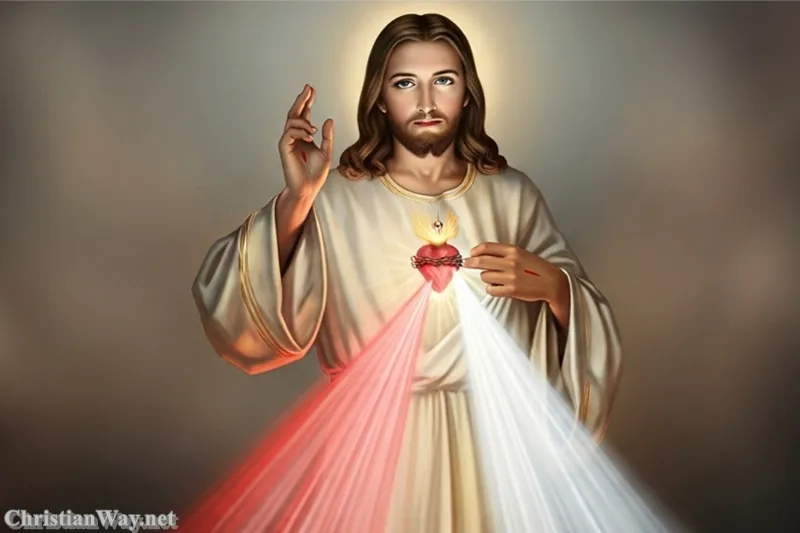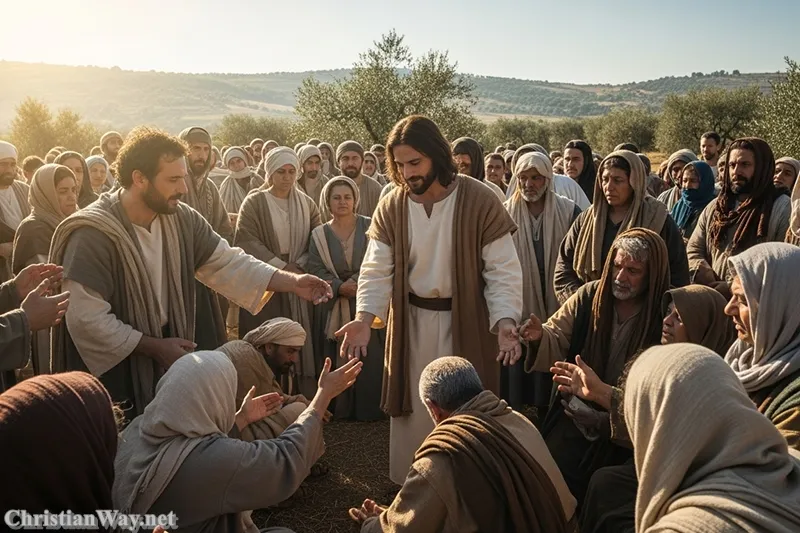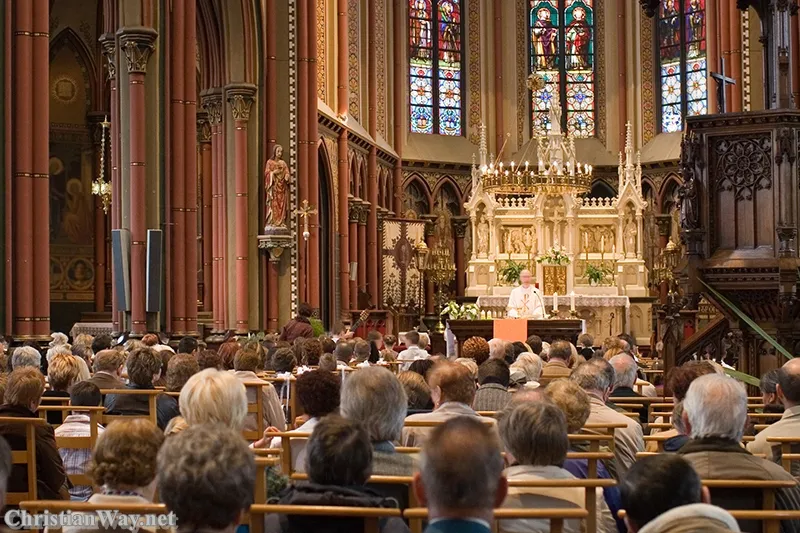Dear friends in Christ,
Every calling begins with a whisper — a moment when the human heart hears a voice not of this world and feels drawn toward something eternal. Such was the life of Saint Andrew, known in Scripture as the first of the disciples to recognize and follow the Lord Jesus. He was not a man of loud declarations or political ambition. He was, rather, a quiet soul who, upon finding the Messiah, immediately desired that others should meet Him too. Among the Twelve, he is remembered as Andrew the Apostle, the Brother of St. Peter, and the one who introduced his own brother to Christ — a gesture that changed the course of salvation history.

The story of St. Andrew invites us to see that evangelization begins not in grand speeches but in simple gestures of love — a word of faith, an act of charity, a heart that points others toward Christ. His life shows us that the first vocation of every Christian is not to be known, but to make Christ known. In this reflection, we will walk through the life, faith, and witness of Saint Andrew: his calling, his mission, his martyrdom, and the legacy that continues to inspire the Church to this day.
The Calling of Saint Andrew: The First to Follow the Lord
When the Gospel of John introduces Andrew, it gives him a beautiful title: “One of the two who heard John speak and followed Jesus” (John 1:40). Andrew had been a disciple of John the Baptist, a man already searching for the truth, already listening for the voice of God. When John pointed to Jesus and said, “Behold, the Lamb of God!” (John 1:36), Andrew’s heart recognized the truth in those words. He and another disciple followed Jesus at once, asking, “Rabbi, where are You staying?” — and Jesus replied, “Come and see.”
That simple exchange reveals the core of Andrew’s faith: it is personal, immediate, and alive. He did not wait for proof or position; he responded to an invitation. He spent that day with Jesus — and from that moment, everything changed. The Gospel tells us, “He first found his brother Simon and said to him, ‘We have found the Messiah’” (John 1:41).
The Brother of St. Peter: A Relationship of Faith and Humility
Andrew’s relationship with his brother Simon (later called St. Peter) is one of the most tender aspects of the Gospel story. It was Andrew who brought Peter to Jesus. Though history remembers Peter as the “Rock” upon which Christ built His Church, we must not forget that it was Andrew who first led Peter to the Lord. There is a quiet humility in that — a willingness to stand in the background while others rise to leadership.
In this, Saint Andrew models for every Christian a profound truth: that greatness in the Kingdom of God is not measured by prominence, but by fidelity. The one who leads another to Christ, even if his own name fades into history, shares in the glory of the Gospel.
Andrew’s Role Among the Apostles
While not as frequently mentioned as Peter, James, or John, Andrew the Apostle appears at key moments in the Gospel. He was present at the miraculous feeding of the five thousand (John 6:1–14), where he brought forward a boy with five loaves and two fish. Though Andrew wondered aloud, “What are these among so many?” his act of faith — bringing what little they had to Jesus — became the seed of a great miracle.
He also appears when certain Greeks wished to see Jesus (John 12:20–22). It was Andrew, along with Philip, who facilitated this encounter, once again acting as a bridge between Christ and others. These glimpses reveal the heart of St. Andrew’s vocation: he is the Apostle who connects, who introduces, who mediates. He brings others to Christ and lets Christ do the rest.
The Quiet Apostolate
Andrew’s apostolate was not marked by dramatic sermons or public confrontation. He worked quietly, faithfully, and persistently. In an age that often glorifies visibility and recognition, Saint Andrew reminds us that much of God’s work is accomplished in hiddenness. Like the yeast that leavens the dough or the seed that grows unseen beneath the soil, the Gospel advances through the faith of those who live and love quietly, steadfastly, and without seeking reward.
The Missionary Journey of Saint Andrew
Tradition holds that after Pentecost, when the Holy Spirit descended upon the Apostles, Andrew the Apostle carried the Good News far beyond the borders of Judea. Early Christian writings and later legends tell of his missionary journeys to Scythia (modern Ukraine and southern Russia), Greece, and perhaps even the far reaches of Asia Minor.
In these places, he preached Christ crucified and risen, baptizing believers, establishing communities of faith, and appointing leaders to continue the work. Though we do not possess detailed records of his ministry, the consistent testimony of ancient sources honors him as a tireless missionary — a man who brought the Gospel to lands that would one day become deeply Christian.
Apostle to the Greeks
It is fitting that St. Andrew is particularly associated with Greece, where he suffered martyrdom in the city of Patras. Because of this, he is honored as the patron saint of Greece and of the Ecumenical Patriarchate of Constantinople. His connection with the Eastern Churches is profound — so much so that the Patriarch of Constantinople is sometimes called “the successor of St. Andrew,” just as the Pope of Rome is called “the successor of St. Peter.”
In this sense, Andrew stands as a bridge not only between people but between Churches — a symbol of unity between East and West, reminding Christians of every tradition that we are all brothers and sisters called by the same Lord.
The Martyrdom of Saint Andrew
The end of Saint Andrew’s earthly life came in witness to the cross of Christ. Tradition holds that he was condemned to death by crucifixion in Patras, around the middle of the first century. Out of humility, he asked not to be crucified on the same kind of cross as his Lord but on one shaped like an X — now known as the “St. Andrew’s Cross.”
As he approached the cross, Andrew is said to have greeted it with love, saying:
“Hail, O Cross! Sanctified by the body of Christ, adorned by His limbs as by precious jewels. Long have I desired and sought you; now I come to you with joy and peace.”
These words express the heart of Christian martyrdom — not fear, but love; not despair, but joy in sharing the suffering of Christ. For Apostle Andrew, the cross was not an end, but a meeting place — the final encounter with the Lord he had loved and served.
The Cross as His Crown
The X-shaped cross became the emblem of his faith and the sign under which countless generations have honored his memory. It stands today on the flag of Scotland, where he is the patron saint, symbolizing courage, faith, and steadfast devotion. Across Europe and beyond, churches dedicated to St. Andrew remind the faithful that the path of discipleship leads always toward the cross — and through it, to resurrection.
The Legacy of Saint Andrew
The legacy of Saint Andrew is far-reaching, touching every corner of the Christian world. From Scotland to Greece, from Russia to the shores of the Holy Land, his name is venerated with love. Yet beyond these outward honors lies a deeper legacy — the spiritual example of a man who quietly brought others to Christ.
His story teaches us three essential lessons for the life of faith:
- Discipleship begins with encounter. Like Andrew, we are called to respond personally to Christ’s invitation: “Come and see.”
- Evangelization is relational. It happens when we, in love, bring others to meet Jesus — whether through words, prayer, or simple acts of mercy.
- True greatness lies in humility. Andrew’s joy was not in being known, but in helping others know the Lord.
A Model for Christian Witness Today
In our modern world — filled with noise, pride, and competition — the spirit of Saint Andrew offers a gentle corrective. His way was one of quiet faithfulness. He did not seek the first place, nor did he resent the prominence of others. His joy was to see Christ increase, even if he himself diminished.
This humility, born of love, is what makes Andrew’s witness timeless. Every parent who teaches their child to pray, every friend who offers comfort in Christ’s name, every believer who speaks of faith in sincerity — all walk the path of St. Andrew.
Saint Andrew and the Unity of the Church
The relationship between Saint Andrew and St. Peter carries deep symbolic meaning for Christian unity. Peter and Andrew were brothers — called by the same Lord, yet entrusted with different missions. Peter’s ministry became rooted in Rome, the heart of the Western Church. Andrew’s legacy flourished in the East, particularly in Constantinople.
Their spiritual brotherhood continues to this day as a sign of unity between East and West. Each year, the Church of Rome and the Ecumenical Patriarchate exchange delegations on their respective feast days — June 29 for Saints Peter and Paul in Rome, and November 30 for Saint Andrew in Constantinople. These gestures, humble though they are, echo the Gospel’s first moment of brotherly encounter — when Andrew said to Simon, “We have found the Messiah.”
The Feast of Saint Andrew
The Church celebrates the Feast of Saint Andrew on November 30, a day of joy and gratitude. It marks the beginning of the Advent season in many Christian traditions — a time when the Church prepares for the coming of Christ. This is no coincidence: Andrew, the first called, reminds us that the journey of faith begins with listening, following, and bringing others along the way.
In some cultures, especially in Scotland and Eastern Europe, the feast is accompanied by special prayers and customs, celebrating not only the Apostle himself but also the spirit of readiness that his example inspires. The faithful remember his courage, his humility, and his missionary zeal — virtues that remain as vital today as they were in the first century.
Reflect and Pray
As we contemplate the life of Saint Andrew, let us hear again the gentle call of Jesus that once reached him by the Sea of Galilee: “Follow Me, and I will make you fishers of men.”
Every Christian, in some way, shares this call — to lead others to Christ, not through force or fear, but through love and truth. May the spirit of St. Andrew the Apostle guide us to become bridges of faith in our families, communities, and the world.
Lord Jesus Christ,
You called Saint Andrew to be the first to follow You and to bring others to Your side.
Grant us a share in his humble zeal,
that we may draw hearts to You by our words and by our lives.
May we, like him, rejoice to bear the cross,
and find in it the path that leads to everlasting joy.
Amen.
May the peace of Christ dwell richly in your heart, and may Saint Andrew, Apostle and brother of Peter, pray for you always.
— Fr. John Matthew, for Christian Way





